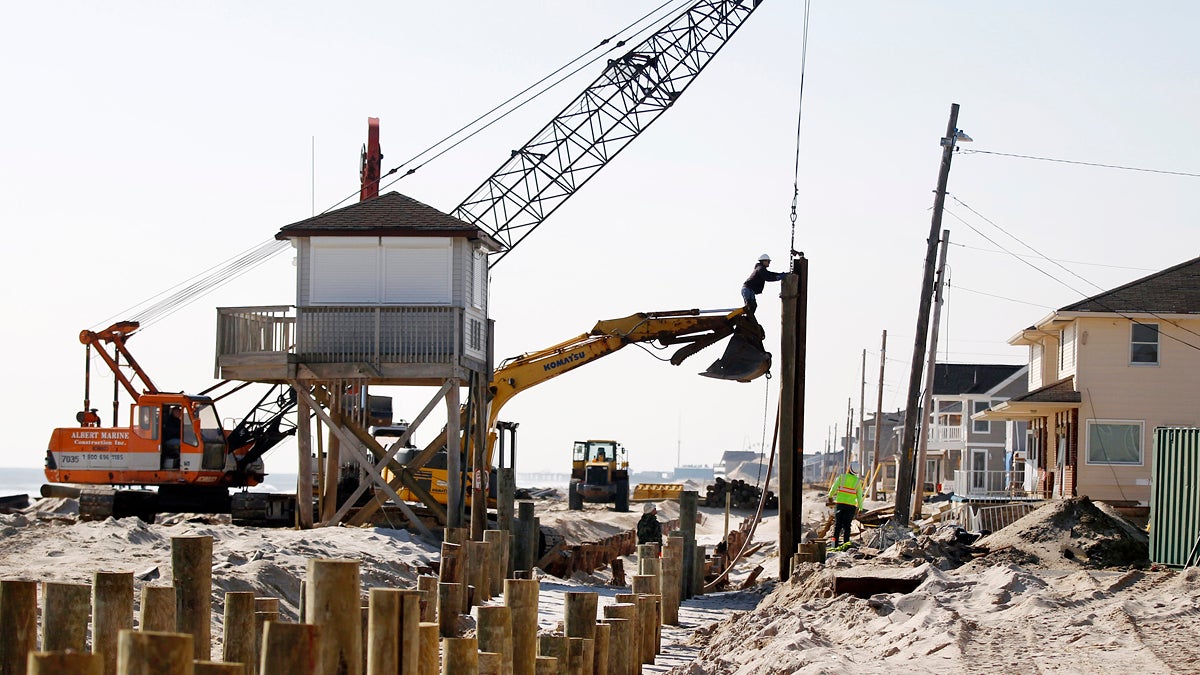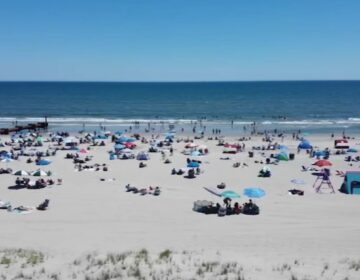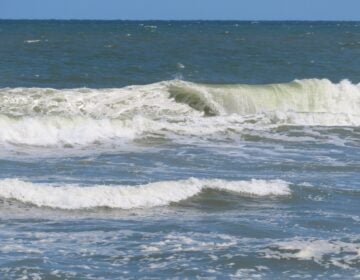Rethinking the Shore — Approach 1: Rebuild and Prepare

Many communities are rebuilding as fast as they can to ensure they don't miss out on the summer tourism season. (AP File Photo/Mel Evans)
The community dialogues called “Ready for Next Time? Rethinking the Shore After Sandy” use an issue guide devised by WHYY and the Penn Project for Civic Engagement.
This discussion framework takes the many ideas, arguments and debates going on right now and organizes them into three general approaches or perspectives: 1) Rebuild and Prepare 2) Rethink and Adapt 3) Restore and Retreat. Today, NewsWorks presents the first of those approaches in detail:
THE OVERALL CHALLENGE
At the regional, state, community and individual levels, our economic and emotional investment in the Shore is huge. But the evidence of Irene and Sandy suggests that storms of hurricane force will hit the Shore again, threatening major damage and loss of life. Views diverge on what changes in Shore development patterns and habits need to happen to respond to this threat.
APPROACH 1 – REBUILD AND PREPARE
Given our investment in the Shore, including its role in the traditions, dreams and lifestyles of millions of people, it’s unthinkable not to rebuild what was lost or damaged. We should focus on repairing damage, rebuilding homes and businesses, and reviving the Shore economy as quickly as possible. Individual homeowners and businesspeople who suffered losses deserve help, with little red tape.
The storms of the last two years were probably outliers, so it’s important to respond, but not overreact. The storms did point up some serious flaws in preparedness and emergency communications. These should be fixed before the next storm hits; social media and technology can be big helps here.
PROPONENTS TEND TO FAVOR THESE ACTIONS:
Give ample, swift government aid to help homeowners rebuild.
Give ample, swift government aid to help businesses and business districts reopen.
Replenish beaches as quickly as possible to restore tourism, property values and people’s spirits.
Rebuild dunes to provide more effective flood protection.
Give municipalities the lead role in redeveloping their communities, including clear legal authority to green light development on piers.
Help municipalities create better emergency plans, including use of social media for real-time communication during emergencies.
Establish clearer, firmer rules regarding evacuation, and do better public communication in advance about evacuation routes, shelters etc.
Limit “no-build” flood zones to a very few clear-cut cases of high risk.
Bolster New Jersey’s tourism industry through national marketing.
Establish in law that the value of protecting property values through dune reconstruction offsets the loss in values caused by lost ocean views.
ARGUMENTS FOR THIS APPROACH
The state economy and the livelihood of thousands depend on Shore tourism.
Individual property owners are not at fault for damage from storms this severe; they deserve society’s help.
New Jerseyans have paid for years to help other Americans damaged by storms, floods, wildfires and earthquakes. No one demanded that those people change how they live to get aid. Top-down planning dictates violate property rights and often overreach.
Sandy was probably a once-in-a-generation storm; let’s not overreact.
Using high-tech and social media, better emergency plans can limit harm.
The histories of thousands of families are interwoven with the patterns of life down the Shore. You can’t just toss aside such deep emotional ties.
Humans have and will always want to live near sand and ocean.
Rebuilding quickly shows the nation New Jersey’s resilient spirit.
If state and U.S. governments act effectively to help those harmed by the storm, it might restore some of the lost trust in government.
Helping out ordinary people harmed by the storm will help ensure that the Shore remains for everyone, not just the rich.
Local control is a valued New Jersey tradition.
ARGUMENTS AGAINST THIS APPROACH
Building roller coasters next to the ocean will never be a good idea. “Boardwalk” fun will still be fun, even if it moves a bit inland.
Local control brought the Shore the overdevelopment and damaged dunes that worsened damage from Sandy.– Sea levels are rising. The ocean will reclaim within a generation much of what is being built now under the false mantra of “restore the shore.”
Individual property rights end where the individual’s decision clearly harms the properties of others.
New Jersey has too many other priorities to spend all the money it would take to rebuild the old Shore, just to set up a costlier recovery next time.
If we spend our disaster aid foolishly this time, federal taxpayers won’t be willing to help after the next storm.
Plenty of oceanfront communities in other tourism states have learned to develop differently to limit storm damage.
Resilience doesn’t mean stubbornness; it means smart choices.
They’re called “barrier islands” for a reason. Overbuilding damages their ability to protect the mainland. Also, the ocean will move sand and reshape barrier islands as it wants, no matter humankind’s efforts to deter.
This issue guide was prepared with input from WHYY/NewsWorks partners in this dialogue project, including Creative New Jersey, Sustainable Jersey, Citizens Campaign and Jersey Shore Hurricane News.
WHYY is your source for fact-based, in-depth journalism and information. As a nonprofit organization, we rely on financial support from readers like you. Please give today.




